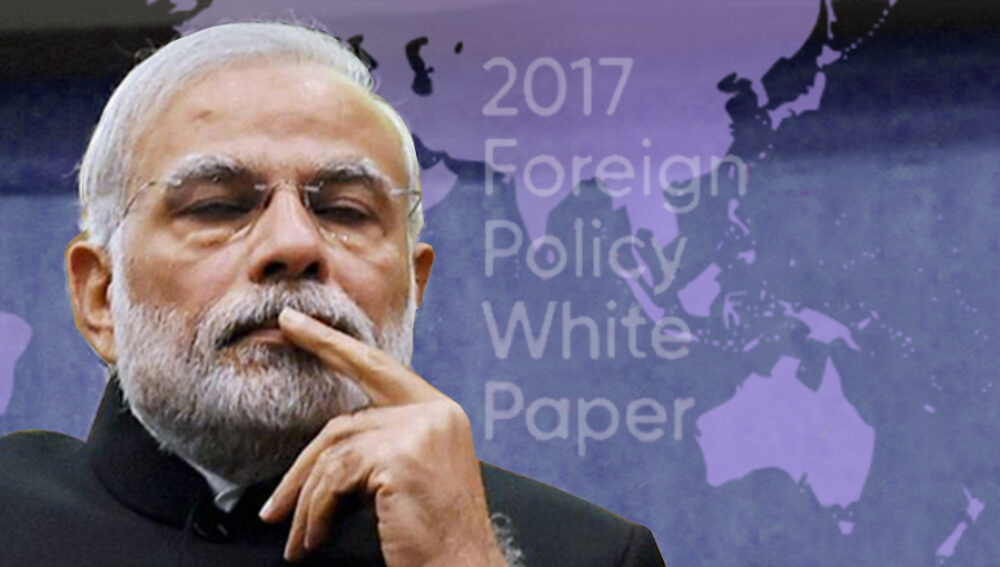IAN HALL |
Few differences between the 2003 Foreign Policy White Paper and the 2017 version are as stark as the treatment of India.
In the earlier document, India figured as a possible source of instability, in terms of its troubled relations with Pakistan and the presence of nuclear weapons on the sub-continent, and an economic opportunity. The bilateral strategic dialogue with New Delhi was mentioned and hopes voiced that the relationship would deepen further. But it was clear that Canberra considered India a marginal player in our region. It was particularly telling, for example, that the substantial section on ‘India’s growing importance’ came after discussions of Japan, China, South Korea, Indonesia, the remainder of ASEAN, and East Timor – in that order.
In the intervening fourteen years since that assessment appeared, much has changed in Australia’s wider strategic outlook and Canberra’s conception of India’s place within it. ‘India now sits’, the 2017 White Paper declares, ‘in the front rank of Australia’s international partnerships.’ Australia and India are now thought to have ‘congruent’ security interests. Today, Canberra ‘strongly encourages India’s strategic engagement with East Asia and the United States’ – an important endorsement of New Delhi’s ‘Look East’ and ‘Act East’ policies and its deepening strategic partnership with Washington. The White Paper welcomes and looks forward to cooperating with India in the areas of maritime security and maintaining freedom of navigation. Due acknowledgement is given of India’s role in regional forums, including the East Asia Summit and the Indian Ocean Rim Association. Concerns are still expressed about India-Pakistan relations, and notably new concerns are voiced about the Sino-Indian border dispute, but it is now apparent that India is now well and truly present and active in Canberra’s mental map of the region.
At the same time, the White Paper is more realistic – indeed, even overly conservative – about the prospects for the Australia-India economic relationship. It calls India a ‘priority economic partner’ and notes the desire for a Free Trade Agreement, but acknowledges that it will take time for New Delhi to enact the kinds of reforms that will open India up for Australian businesses. Rightly, it also recognises burgeoning links between Australian and Indian universities, as well as the growing number of Indian students choosing to study here, up to just above 60,000 in 2016.
Overall, then, the treatment of India in the White Paper reflects a wider shift: the move away from seeing Australia’s relationships with the Indo-Pacific region primarily in terms of economic opportunities, of openings for trade and investment, or locations for aid and development assistance. It represents a shift away from the view that – to put it bluntly – Australia can stay aloof from the politics and security challenges of the region, letting the United States and regional states tackle these hard problems. Tacitly, it recognizes that high rates of economic growth and intensifying economic interdependence are not on their own going to resolve political differences, territorial disputes, or security dilemmas. The message of the White Paper is clear: if Australia wishes to maintain its political independence as well as its living standards, it needs to engage meaningfully and consistently with regional states, including India, to safeguard those national interests.








